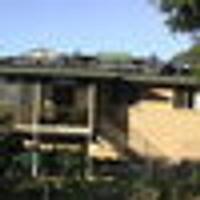MJCD
in over 11 years
Outdoor Finish
I’m sure this is an old topic, but I’ve been away for a while, and need the considered wisdom of the Forum.
I’ve selected either Jatoba or Teak as the wood, and am looking to build wet-condition tables, to withstand a 3-season (non-Winter) placement in a gazebo. While there will be occasional direct sun light, it shouldn’t be intense or long-lasting.
My homework suggests either T3 or an epoxy glue on load-bearing surfaces.
Regarding the Finish – this is where I’m really stumped… I’m looking at a Deft Exterior Poly, over a Tint-base Stain – that is, I don’t want to add to the color of the wood, but I do want some penetration, and to give the Poly something to seal into.
I would appreciate your thoughts and consideration.
Thanks,
7 Replies
I wouldn’t touch a project like that with any of the cheap poly finishes. They are surface coats and will expand and contract at different rates than will the wood and will fail.
At first, you’ll get cracks in the surface, then water will seep in through the cracks and be held in by the finish, causing it to decay even quicker.
Then there is the refurbish issue. As you probably know, stripping poly to put on a new coat is no fun.
I’m a fan of non-hardening oils, aggressively applied. It replaces lost moisture, but, unlike water, doesn’t evaporate. Instead, it wicks in. As such, applications are cumulative.
If you can get some good penetration with the oil early on, it gets even easier to maintain the project. After all, applications don’t require sanding or stripping.
I’m experimenting with an old formula and I suspect it might hold up fairly well. It’s just turpentine, boiled linseed oil and pine tar. The latter can be gotten anywhere they sell supplies for caring for horses. A quart runs about ten near me.
I want to see how it does, since pine tar has been used to seal ships and boats for ages. The stuff I’ve applied hardens and can be sat on.
Kelly:
That’s Insightful… the expansion and contraction of the wood vs. the hardness of the Poly – this is exacerbated by the wet/dry outdoor environment.
Much to consider.
Thanks, again.
MJCD
Do what the yachties do. Use a very good spar varnish. Use lots of coats like 12, then sand and put on one coat once every year.
—Madts.
Tor and Odin are the greatest of gods.
Well from what I have heard the West System 2 pack epoxy lasts 10 years.
Maybe shipwright will respond to verify.
Any way next coat for my outdoor steps and seat will be Wests, sure beats having to redo every year without fail
Regards Rob
From my experience epoxy breaks down in the sun. I have always covered the epoxy with several coats of varnish.
—Madts.
Tor and Odin are the greatest of gods.
Opps there is experince speaking.
Regards Rob
As to the high end spar varnishes and such, do a search on short and long oil finishes.
Most the high end (e.g., hundred bucks a gallon) finishes are long oil finishes.
Calling something a long oil finish is just a way of saying the finish has more linseed or tung oil added to the resin and solvent mix. Obviously, then, a short oil finish has less.
Adding oil to the finish produces a finish less resistant to abrasion, but more flexible. As such, it has more capacity to flex with changes in the wood caused by moisture gain and loss.
Of course, we need to be mindful of that everything has its limits and everything needs maintenance.










